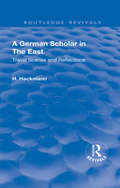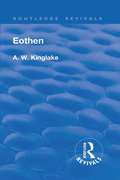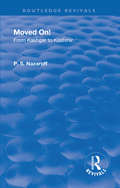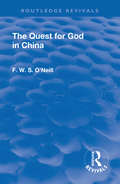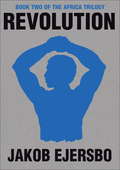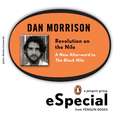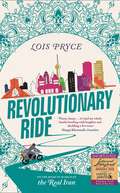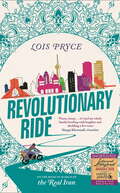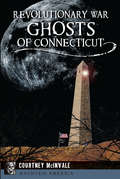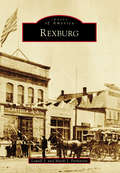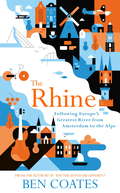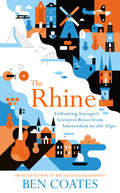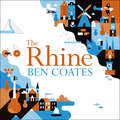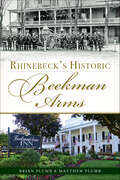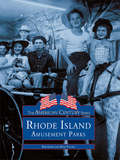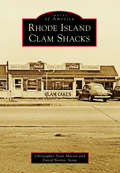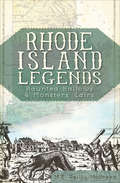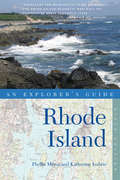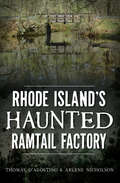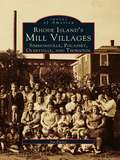- Table View
- List View
Revival: Travel Scenes and Reflections (Routledge Revivals)
by Heinrich HackmannIn 1910., Dr Hackmann started on a lengthy tour throughout Mongolia, China, Japan, Cambodia, Siam, and India, studying Buddhism and other Eastern Religions, Shintoism and Taoism. He returned to London in the spring of 1911, and published this book.
Revival: Eothen (Routledge Revivals)
by Alexander William Kinglake Henry Romilly Fedden1948 edition of this popular work, first published in 1844. It presents an entertaining account of the author's Eastern travels. Ostensibly with a view to providing a suggested outline of a tour to the interested reader, the book's portrayal of the internal journey one takes when travelling is as important an aspect of the book's value as is the historical interest it provides.
Revival: Moved on! From Kashgar to Kashmir (Routledge Revivals)
by Pavel Stepanovich NazaroffPavel Nazaroff travels from Kashgar, through the Kuen Lun and Karakoram mountains and on to Srinagar, Kashmir in the early 1930s, and describes the people and places he visited.
Revival: Oriental Memories of a German Diplomatist (Routledge Revivals)
by Friedrich RosenHis Excellency Dr. Friedrich Rosen, the well known German Diplomatist and Orientalist, has written a fascinating account of his manifold experiences in the Near East, including Palestine, Syria, Persia and Mesopotamia, during a period of forty years. Many politically important or otherwise interesting mean and women, such as Ex-Emperor William II, Prince Bulow, Baron von Holstein, Sir Frank Lascelles, Sir Valentine Chirol, Lord Curzon and Miss Gertrude Bell, are spoken of in this volume.
Revival: The Quest for God in China (Routledge Revivals)
by F. W. O'Neill,Those who are determined to find the beliefs of other people altogether wrong are recommended not to read this book. No one indeed would care openly to avow such a determination. At the same time, there are very few of us who are able to preserve an unwavering attitude of trust in all assorts of conditions of men. Especially is this the case when our humankind is separated into parties, nations, and religions, labelled with names to some of which in differing ways we have been accustomed to attach associations of dislike. This book discusses Buddhism, Taoism, Confucianism, and Mohammedanism to educate the public as well as theological students.
Revolution (The Africa Trilogy)
by Jakob EjersboRevolution is a collection of eleven short stories that act as a vital bridge between the novels Exile and Liberty. But it is also so much more than that. Ejersbo had a remarkable and unaffected talent for getting inside the heads of his characters: Moses, a worker in a Tanzanite mine who lives in hope of striking it rich; Sofie, a Greenlander who joins a French conman on his trip around the world; Rachel, who tries to make a life for herself in a city where everyone sees her as a whore in waiting. You feel that Ejerbso could have written from the heart of every person living in Tanzania; and that you could go on reading them forever.
Revolution
by Jakob EjersboRevolution is a collection of eleven short stories that act as a vital bridge between the novels Exile and Liberty.But it is also so much more than that. Ejersbo had a remarkable and unaffected talent for getting inside the heads of his characters: Moses, a worker in a Tanzanite mine who lives in hope of striking it rich; Sofie, a Greenlander who joins a French conman on his trip around the world; Rachel, who tries to make a life for herself in a city where everyone sees her as a whore in waiting.You feel that Ejerbso could have written from the heart of every person living in Tanzania; and that you could go on reading them forever.
Revolution
by Jakob EjersboRevolution is a collection of eleven short stories that act as a vital bridge between the novels Exile and Liberty. But it is also so much more than that. Ejersbo had a remarkable and unaffected talent for getting inside the heads of his characters: Moses, a worker in a Tanzanite mine who lives in hope of striking it rich; Sofie, a Greenlander who joins a French conman on his trip around the world; Rachel, who tries to make a life for herself in a city where everyone sees her as a whore in waiting. You feel that Ejerbso could have written from the heart of every person living in Tanzania; and that you could go on reading them forever.
Revolution on the Nile: A New Afterword to The Black Nile: A Penguin eSpecial
by Dan MorrisonA New Afterword to The Black Nile<P> An incisive report from the front lines of South Sudan's freedom referendum. In January 2011, weeks before Arab Spring took the world by storm, millions of Sudanese citizens enacted a democratic uprising of their own. In this addendum to his critically acclaimed book, The Black Nile, foreign correspondent Dan Morrison reports on the South Sudan secession from the ground, offering an unflinching portrait of the ideals, interests, and individual lives wrapped up in the struggle for freedom after decades of dictatorial rule.
The Revolution Where You Live: Stories from a 12,000-Mile Journey Through a New America
by Sarah van GelderDiscover the Real Revolution Unfolding across AmericaAmerica faces huge challenges—climate change, social injustice, racist violence, economic insecurity. Journalist Sarah van Gelder suspected that there were solutions, and she went looking for them, not in the centers of power, where people are richly rewarded for their allegiance to the status quo, but off the beaten track, in rural communities, small towns, and neglected urban neighborhoods. She bought a used pickup truck and camper and set off on a 12,000-mile journey through eighteen states, dozens of cities and towns, and five Indian reservations. From the ranches of Montana to the coalfields of Kentucky to the urban cores of Chicago and Detroit, van Gelder discovered people and communities who are remaking America from the ground up. Join her as she meets the quirky and the committed, the local heroes and the healers who, under the mass media's radar, are getting stuff done. The common thread running through their work was best summed up by a phrase she saw on a mural in Newark: “We the People LOVE This Place.” That connection we each have to our physical and ecological place, and to our human community, is where we find our power and our best hopes for a new America.
Revolutionary Ride: On the Road to Shiraz, the Heart of Iran
by Lois PryceIn 2011, at the height of tension between the British and Iranian governments, travel writer Lois Pryce found a note left on her motorcycle outside the Iranian Embassy in London:... I wish that you will visit Iran so you will see for yourself about my country. WE ARE NOT TERRORISTS!!! Please come to my city, Shiraz. It is very famous as the friendliest city in Iran, it is the city of poetry and gardens and wine!!!Your Persian friend,HabibIntrigued, Lois decides to ignore the official warnings against travel (and the warnings of her friends and family) and set off alone on a 3,000 mile ride from Tabriz to Shiraz, to try to uncover the heart of this most complex and incongruous country. Along the way, she meets carpet sellers and drug addicts, war veterans and housewives, doctors and teachers - people living ordinary lives under the rule of an extraordinarily strict Islamic government.Revolutionary Ride is the story of a people and a country. Religious and hedonistic, practical and poetic, modern and rooted in tradition - and with a wild sense of humour and appreciation of beauty despite the comparative lack of freedom - this is real contemporary Iran.
Revolutionary Ride: On the Road in Search of the Real Iran
by Lois Pryce'Warm, funny . . . It's had my whole family howling with laughter and shedding a few tears' - Shappi Khorsandi, Guardian'A proper travelogue - a joyful, moving and stereotype-busting tale' - National Geographic Traveller, Books of the YearIn 2011, at the height of tension between the British and Iranian governments, travel writer Lois Pryce found a note left on her motorcycle outside the Iranian Embassy in London:... I wish that you will visit Iran so you will see for yourself about my country. WE ARE NOT TERRORISTS!!! Please come to my city, Shiraz. It is very famous as the friendliest city in Iran, it is the city of poetry and gardens and wine!!!Your Persian friend,HabibIntrigued, Lois decides to ignore the official warnings against travel (and the warnings of her friends and family) and sets off alone on a 3,000 mile ride from Tabriz to Shiraz, to try to uncover the heart of this most complex and incongruous country. Along the way, she meets carpet sellers and drug addicts, war veterans and housewives, doctors and teachers - people living ordinary lives under the rule of an extraordinarily strict Islamic government.Revolutionary Ride is the story of a people and a country. Religious and hedonistic, practical and poetic, modern and rooted in tradition - and with a wild sense of humour and appreciation of beauty despite the comparative lack of freedom - this is real contemporary Iran.*Shortlisted for the Adventure Travel Book of the Year Award*'Within a few pages I'd recognised a kindred spirit' - Dervla Murphy, author of Full Tilt
Revolutionary War Ghosts of Connecticut (Haunted America)
by Courtney McInvaleThe founder of Seaside Shadows Haunted History Tours sheds light on the supernatural stories of the Constitution State. Bloody battlefields and raucous taverns in Connecticut served as the backdrop for pivotal figures and bold actions vital to the American Revolution. Nathan Hale is said to still conduct lessons in New London and East Haddam, and many suspect that George Washington occasionally visits the Shaw Mansion and Fairfield's Sun Tavern. The presence of notorious traitor Benedict Arnold is often felt in the Leffingwell Inn and at Ye Antientist Burial Ground in New London, where he commanded troops numbering 1,600 as a newly turned Loyalist. Picnickers claim to see apparitions of wounded soldiers seated among them at Fort Griswold in Groton. Step foot into a time when the Sons of Liberty, Tories and Patriots changed the course of history as author Courtney McInvale uncovers the Revolutionary haunts of Connecticut.
Rexburg (Images of America)
by Mardi J. Parkinson Lowell J. ParkinsonThe mountainous terrain and abundance of rivers near what would later become the city of Rexburg were a magnet for the Missouri Fur Company; in 1810, Maj. Andrew Henry, a representative for the company, built a trading post seven miles north of Rexburg. On March 10, 1883, Thomas E. Ricks, who was accompanied by 10 men, settled an area located east of the three buttes across the Snake River. Rexburg's early days reflected the typical lifestyle of many northwestern towns in the late 19th century: saloons dotted Main Street, cowboys got into shooting matches in town, and farmers struggled to conquer mother earth while pioneer families endured the cold harsh winters. The combination of tall sagebrush and volcanic ash proved to be an ideal agricultural combination for producing wheat, barley, and potatoes. Education was important, and a college was established in the early years, starting in 1888.
Reynolda: 1906-1924
by Barbara Babcock MillhouseReynolda--with its family home and gardens, experimental farm, village, and woodland--is an excellent example of the Country Place era. This popular destination in Winston-Salem, North Carolina, was created between 1906 and 1924 through the collaboration of three talented people: visionary Katharine Reynolds, architect Charles Barton Keen, and landscape architect Thomas W. Sears. With the financial backing of her husband, founder of the R. J. Reynolds Tobacco Company, Katharine Reynolds transformed a patchwork of worn-out farmland into a landscape of great natural beauty that includes a formal garden, 16-acre lake, recreational facilities, and some of the finest cropland. The sparkling white cluster of village buildings and their occupants are also integral to this story.
The Rhine: Following Europe’s Greatest River from Amsterdam to the Alps
by Ben CoatesThe Rhine is one of the world's greatest rivers. Once forming the outer frontier of the Roman Empire, it flows 800 miles from the social democratic playground of the Netherlands, through the industrial and political powerhouses of Germany and France, to the wealthy mountain fortresses of Switzerland and Liechtenstein. For five years, Ben Coates lived alongside a major channel of the river in Rotterdam, crossing it daily, swimming and sailing in its tributaries. In The Rhine, he sets out by bicycle from the Netherlands where it enters the North Sea, following it through Germany, France and Liechtenstein, to its source in the icy Alps. He explores the impact that the Rhine has had on European culture and history and finds out how influences have flowed along and across the river, shaping the people who live alongside it. Blending travelogue and offbeat history, The Rhine tells the fascinating story of how a great river helped shape a continent.
The Rhine: Following Europe's Greatest River from Amsterdam to the Alps
by Ben CoatesThe Rhine is one of the world's greatest rivers. Once forming the outer frontier of the Roman Empire, it flows 800 miles from the social democratic playground of the Netherlands, through the industrial and political powerhouses of Germany and France, to the wealthy mountain fortresses of Switzerland and Liechtenstein. For five years, Ben Coates lived alongside a major channel of the river in Rotterdam, crossing it daily, swimming and sailing in its tributaries. In The Rhine, he sets out by bicycle from the Netherlands where it enters the North Sea, following it through Germany, France and Liechtenstein, to where its source in the icy Alps. He explores the impact that the Rhine has had on European culture and history and finds out how influences have flowed along and across the river, shaping the people who live alongside it. Blending travelogue and offbeat history, The Rhine tells the fascinating story of how a great river helped shape a continent.
The Rhine: Following Europe's Greatest River from Amsterdam to the Alps
by Ben Coates*SHORTLISTED FOR THE STANFORD DOLMAN TRAVEL BOOK OF THE YEAR AWARD*Ben Coates, author of Why the Dutch are Different, cycles the Rhine river from mouth to source, discovering the mark it makes on Europe.The Rhine is one of the world's greatest rivers. Once forming the outer frontier of the Roman Empire, it flows 800 miles from the social democratic playground of the Netherlands, through the industrial and political powerhouses of Germany and France, to the wealthy mountain fortresses of Switzerland and Liechtenstein. For five years, Ben Coates lived alongside a major channel of the river in Rotterdam, crossing it daily, swimming and sailing in its tributaries. In The Rhine, he sets out by bicycle from the Netherlands where it enters the North Sea, following it through Germany, France and Liechtenstein, to its source in the icy Alps. He explores the impact that the Rhine has had on European culture and history and finds out how influences have flowed along and across the river, shaping the people who live alongside it. Blending travelogue and offbeat history, The Rhine tells the fascinating story of how a great river helped shape a continent.(P) 2021 Hodder & Stoughton Limited
Rhinebeck's Historic Beekman Arms (Landmarks)
by Brian Plumb Matthew PlumbNestled in the picturesque Hudson Valley town of Rhinebeck, the Beekman Arms began humbly as a stagecoach and mail stop on the Old Albany Post Road at the end of the eighteenth century. Of more than forty stage stops that operated along that path, it is the only one still in existence. Through the tenure of many landlords and several notable renovations, it has evolved into the stately inn it is today. Proclaimed the "oldest hotel in America" since the early 1900s, it stands proudly as a symbol of the area's Dutch and English heritage and a reminder of the history that made this area famous. Join authors Matthew and Brian Plumb to explore the storied past of this historic Rhinebeck institution.
Rhode Island Amusement Parks (American Century Series)
by Ryan Young Rob LewisRhode Islanders were once able to enjoy amusement parks without traveling far; the state was home to several ocean front parks as early as the mid-18th century, with some of them surviving into the late 19th century. Photographers Rob Lewis and Ryan Young have embarked on a journey to discover the amusement parks of the past in this delightful and unprecedented collection of images. Rhode Island Amusement Parks brings back the memories of a time less complicated than the present, when a sense of family held communities together. View the parks that provided a recreational outlet for so many Rhode Island families and the visitors who frequented them. Scenes from several neighboring Massachusetts amusement parks are also pictured. The images in this collection are from two large private archives as well as treasured family collections. Special highlights include photographs of hand-operated rides of the 1800s and views of President Taft's plane, which landed at Sandy Beach in 1911. Also featured is Vanity Fair, an amusement park that lasted only five years during the first decade of this century. Residents of these communities will enjoy seeing Rhode Island as it once was and will witness the changes it has endured over the years.
Rhode Island Clam Shacks (Images of America)
by Christopher Scott Martin David Norton StoneSteamships once plied the waters of Narragansett Bay, carrying thousands of guests to feasts of clams prepared in every way imaginable at scenic spots like Rocky Point and Crescent Park. After hurricanes and pollution destroyed Rhode Island’s soft-shell clam and oyster beds, the quahog became the state’s favorite bivalve, and Rhode Islanders took to their automobiles and drove to the beach for clam cakes and chowder at the shacks and chowder houses that carried on the old traditions. Quahogging remains a major business in Rhode Island, where men and women continue to make a living from the sea. The long lines at take-out windows attest that the future of Rhode Island’s clam shacks is secure as they successfully balance changing tastes with time-honored recipes.
Rhode Island Legends: Haunted Hallows & Monsters' Lairs (American Legends Ser.)
by M. E. Reilly-McGreenA historical tour of the Ocean State&’s spookiest sites, with photos included! Rhode Island&’s ghostly heritage is as deep and profound as the history of the state itself. From the ghastly moaning bones of Mount Tom to the stately haunt of Judge Potter in a local library, Rhode Island&’s apparitions have been causing fear for centuries. Follow M.E. Reilly-McGreen as she reveals the ghoulish stories of the state&’s most haunted places. The author delves deep to unearth both little-known tales and those that have helped define the state&’s supernatural history. From ghosts to monsters, this book is your guide to all things spooky in Rhode Island.
Rhode Island (Explorer's Guide)
by Katherine Imbrie Phyllis MérasAn totally updated and revised edition to the most thorough guide to the Ocean State. Diminutive Rhode Island offers great diversity. Explore more than 400 miles of sandy beaches and rocky headlands, the splendid historic mansions of Newport, and the fine restaurants of Providence’s Federal Hill; enjoy the tranquil beauty of Block Island and fascinating museums and historic sites. Veteran travel writers Méras and Imbrie capture it all in this revised and expanded edition.
Rhode Island's Haunted Ramtail Factory (Haunted America Ser.)
by Thomas D'Agostino Arlene NicholsonOfficially listed as haunted by the Rhode Island Census, this dilapidated Foster factory gives up its secrets to New England&’s resident ghost experts. On May 19, 1822, Peleg Walker was found dead inside Foster&’s Ramtail Factory. Almost ten years earlier, he and four other family members had made the fateful decision to start a business. Legend has it that when relations soured over arguments about money, the partnership ended, with Peleg hanging from the very bell rope he rang each morning to signal the change in shift. Whether he took his own life or was murdered remains a mystery. Recognized as a haunted site since 1885, the factory now lies in ruins. Yet Peleg still keeps vigil over its remains, sounding his night watchman&’s bell and drifting with his candle lantern in hand. Authors Tom D&’Agostino and Arlene Nicholson share over two decades of research into the mysterious history of Rhode Island&’s haunted factory. Includes photos! &“Over the past twenty-five years, D&’Agostino has explored scores of sites and produced several books on his adventures, including Haunted Rhode Island. When snooping for spooks, he and his wife, Arlene, carry a briefcase of high-tech gadgetry to document his findings.&” —Rhode Island Monthly
Rhode Island's Mill Villages: Simmonsville, Pocasset, Olneyville, and Thornton (Images of America)
by Joe FuocoRhode Island's Mill Villages is a fascinating visualhistory of the development and evolution of over 150 years of life in Simmonsville, Pocasset, Olneyville, and Thornton. Some 200 rare and historic photographs are coupled with detailed and informative captions that immerse the reader in the daily lives and environments of these communities. In the years surrounding the Civil War, European immigrants and textile workers came to Rhode Island to work in the state's mills. Soon, villages and neighborhoods formed around these mills, creating unique and closely knit communities in which the wealthy families who owned and operated the mills lived side by side with those who labored for them. The photographs presented here offer a glimpse at the development of these familial communities that are such an integral part in the history of both RhodeIsland and the United States.
